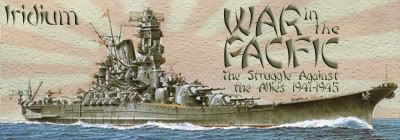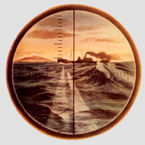mikemike
Posts: 501
Joined: 6/3/2004
From: a maze of twisty little passages, all different
Status: offline

|
quote:
ORIGINAL: rtrapasso
In Re: Type XXI - see Clay Blair's book Hitler's U-Boat War - The Hunted 1942-1945 (Blair has been accused of being way over the top in being pro-U-boat, so if anything he is tends to be too forgiving of their faults) - pages 709-710 (paperback edition) - thi s passage from page 710 (discussing the faults of the type XXI): "Impractical Hydraulic System. The main lines, accumulators, cylinders and pistons of the hydraulic gear for operating the diving planes, rudder, torpedo-tube outer doors, and antiaircraft gun turrets on the bridge were too complex and delicate and were located outside (emphasis in the original text, not mine) the pressure hull. This gear was therefore subject to saltwater leakage, corrosion, and enemy weaponry. It could not be repaired from inside the pressure hull."
Blair devotes another section describing the finding of a U.S. assessment team.
Other problems of the Type XXI mentioned:
- Poor Structural Integrity (actual diving depth was less than the later type VII).
- Underpowered Diesel Engines
- Poor Habitability and Sanitation (i.e.: drinking and washing water was interconnected.)
Other authors have mentioned poor surface maneuverability, but this is a problem common to streamlined subs in general.
As for the stern weakness of the Bismarck and other large German ships - several developed rather catastrophic failure (not just the CA mentioned) but it is late and i should have been asleep 1 hour ago, so i won't pursue this at the moment... 
I've never seen that book you refer to, but others have commented on Clay Blair's position. The hydraulics system of the Type 21 was overly complicated, one of the many "clever" design features inherited from the Type 18 which was designed by the Walther team that comprised able engineers, but nobody who had any experience with design or operation of submarines. The hydraulic actuation of the rudders had to be completely redesigned before it worked properly. But I've never heard of the system being substantially outside the pressure hull - you know that one of the boats was used for more than twenty years postwar as a test&development vehicle which tends to suggest that long-term serviceability of those systems can't have been much of a problem. As I said, had vital systems been vulnerable to that extent, the type would never have been accepted for service, not even under the desperate circumstances prevailing.
I read the relevant passages in Eberhard Rössler, "U-Boottyp XXI" (U-Boat Type XXI), a very detailed monograph, where I found this (my translation) " Difficulties were especially caused by the hydraulic equipment to retract and move the forward diving planes which was fitted outside the pressure hull. Great trouble was caused by contamination of the hydraulic fluid by seawater which led to damage to the pumps. This occured especially with the AA turret drives ... which therefore late in 1944 received their own, isolated hydraulic circuit." Meaning, yes, parts of the hydraulic systems were outside the pressure hull, but it was obviously felt that this would not negatively impact the combatworthiness of the type.
BTW, the mechanism of the forward planes was copied from the Dutch O25 class. The Dutch apparently didn't see any particular problem with this arrangement, either.
U.S. assessment teams are always dismissive of foreign kit, so that evaluation doesn't surprise me. I assume they didn't mention the torpedo reload arrangement that allowed firing the second full salvo just eleven minutes after the first. Does anybody know how long it took the crew of a Gato to reload all six tubes?
That the strength of the pressure hull wasn't what was intended was suspected in 1944 already - curse of the double-bubble hull: at the time no mathematical methods existed that would have allowed precise calculation of such a pressure vessel, and the lower lobe of the pressure hull was designed by estimate. Design diving depth was 133 metres, meaning a combat diving depth of 220 metres and a crush depth of 330 metres, which was comparable to the VIIC boats. Tests in a pressure dock showed that the lower lobe of the hull collapsed at a pressure of 31,5 atmospheres (equivalent to a depth of about 315 metres), but no type 21 went deeper than 220 metres, deep-diving trials in Norway were terminated at that depth because the "pressure-tight" emergency raft containers imploded at that depth.
Underpowered diesels? This were not fleet submarines, designed for maximum surface speed. The diesels just had to be powerful enough to recharge the batteries in an acceptable time. The diesels were turbosupercharged 6-cylinder versions of the MAN M9V 40/46 which powered the Type IX boats, developing 2000 hp each. Unfortunately, the afterthought of a snorkel fitted to the Type 21's had an inadequate cross section that choked the superchargers thus cutting output to 1400 hp, which was still adequate, if not ideal, for the boats. BTW, the first installations of the M9V 40/46 were U.S. Submarines Cachalot and Cuttlefish, whose crews were unable to properly operate and maintain the engines. The crews of more than 170 Type IX boats never had that kind of trouble. Problem of the engines? I don't think so.
As to habitability, the Type 21's probably couldn't compare to the floating ice-cream parlors the USN was operating, but they were worlds better than the Type VII and IX boats; certainly their crews had no complaints. On the other hand, if the US boats had tried to operate in the North Atlantic in the same way as the U-Boats, the ASW forces would have caught them routinely on the surface, because their crash dives could have been timed with a tear-off calendar. US submarines either attacked completely submerged or stayed on the surface and fought it out. In the North Atlantic they wouldn't have been any more successful than the Italian boats.
Maneuvering the XXI's on the surface was even more awkward than caused by the hull shape alone because the propeller shafts were so widely splayed outwards. The turning circle was double that of the Type IX boats; to minimize the turning radius, the inner propeller had to be run faster than the outer propeller, which is the opposite of normal behaviour.
I'll freely concede that the Type 21's were a hastily slapped-together contingency design with many flaws and a frequently sub-optimal quality of construction, but they would have caused a whole new world of hurt for Allied ASW forces if they had gone into combat in significant numbers.
< Message edited by mikemike -- 6/28/2008 3:05:43 AM >
_____________________________
DON´T PANIC - IT´S ALL JUST ONES AND ZEROES!
|
 Printable Version
Printable Version























 New Messages
New Messages No New Messages
No New Messages Hot Topic w/ New Messages
Hot Topic w/ New Messages Hot Topic w/o New Messages
Hot Topic w/o New Messages Locked w/ New Messages
Locked w/ New Messages Locked w/o New Messages
Locked w/o New Messages Post New Thread
Post New Thread